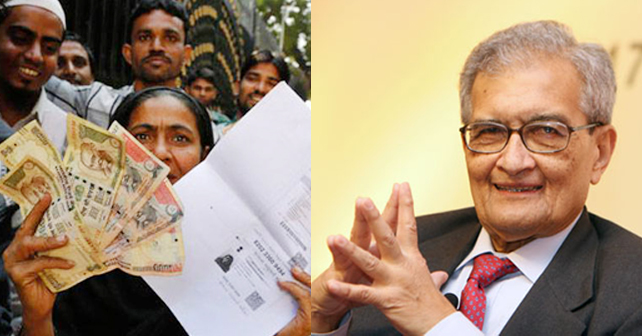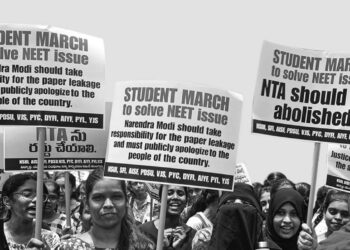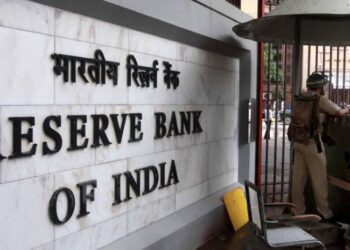prof.Amartya sen
The truth may ultimately prevail about demonetisation, but the government might be able to maintain the loyalty of a large part of the public for a long time, says Amartya Sen
More than two months after the demonetisation, Nobel Laureate and economist Amartya Sen says that any proper “economic reasoning could not have sensibly led to such a ham-handed policy.” He predicts that the demonetisation will hit the economy quite drastically. In an interview with Suvojit Bagchi at his home in Santiniketan, which he visits every winter, Professor Sen spoke about the motives and impact of the move.
We’ve seen the primary impact of the demonetisation: long queues outside banks and shortage of cash. Now we are seeing the secondary impact, which is on the informal sector. Potato sowing in West Bengal is affected and some other businesses are collapsing. What could be the impact of all this?
What you are calling “the secondary impact” shouldn’t at all be surprising since the availability of money plays a very big part in facilitating business and trade. Particularly for small businesses (farming, for example), money is often used in the form of cash. In the long run, cashless transactions can perhaps be made into routine practice, through organisation and training, but that would take time. To act on the presumption of instant learning and institutionalisation is to place the hard-earned interests of many people without any connection to ‘black money’ in serious risk.
Most of what we now call cash is actually promissory notes, the emergence of which reflected a big advance over relying only on precious metals (like gold and silver). Promissory notes played a significant part in building up the financial backbone of industrial Europe. If in the 18th or 19th century, Britain had been demonetised suddenly, it would have devastated British industrial progress.
Given the underdevelopment of electronic accounts and transactions, big parts of the economy are similarly vulnerable. For many, especially among the poor, making efficient and correct use of electronic payments and receipts would remain difficult to master and the possibility of losing one’s money would be hard to avoid, especially given the shortage of infrastructure and the slowness of learning in using cashless transactions. The perplexing question is why some people — those who gave us demonetisation — did not foresee that this would happen and even more perplexing is how the promoters of demonetisation can be so blind even now to the overwhelming evidence of a crisis.
Why has over 85 per cent of cash suddenly been taken out of circulation?
The Government of India seems to have been caught in a confusion of purposes. Demonetisation has been seen both as a way of catching and eliminating ‘black money’, and as a way of moving towards a ‘cashless economy’. The former has gradually been replaced in the rhetoric of the government by the latter, which is not surprising as demonetisation can make only a very small contribution — at a huge social cost — to the ‘black money problem’. This is because only a very small proportion of black money (it is estimated to be 6 per cent or so, certainly less than 10 per cent) is in cash. Most black money is in the form of precious metals and other assets in foreign accounts. The inconvenience and loss imposed with no black money (workers earning wages; small businesses doing trade or production; people, even housewives, keeping small savings) are much more acute than any benefit from catching relatively small amounts of black money. There are going to be huge job losses too, and the recent reports by All India Manufacturers’ Organisation are beginning to show that serious job losses are already happening as a result of what London’s Financial Times has called “a dramatic drop in business in the 34 days since Narendra Modi… announced his plan to scrap 86 per cent of its banknotes.”
The unrealistic governmental expectation that the ‘black money problem’ can be solved, or largely removed, by demonetisation soon became clear even to the government. Then the initially trumpeted objective of getting rid of black money through demonetisation was suddenly changed into a very different objective — to leap rapidly into a cashless society. However, for such a structural change, much more time is needed, and the draconian measures — penalties installed in the hope of catching black money — are particularly ill-
suited. The result has been a combination of chaos and widespread suffering rather than an orderly transition to a cashless society.
Do you think there are political reasons behind the demonetisation move? The elections are coming up, so that may have been one?
I don’t really know. Since economic reasoning could not have sensibly led to such a ham-handed policy, it is natural for people to suspect an explanation in terms of political advantages that the ruling parties were expecting to get. It has certainly given, at least for the time being, a great political image to the Prime Minister of being a huge fighter against corruption, even though the policy has done very little to achieve anything on that front.
These 50 days of hardship will not take black assets out of the economy?
How could it? Only a very small proportion of black money (around 6 per cent, certainly less than 10 per cent) is in cash. How can cleaning up of 10 per cent, at most, of black money clean it all up? Even that 10 per cent is a huge overestimate, since the ‘black money dealers’ are much more skilled in overcoming official barriers than are normal honest people who are simply harassed — or made to lose their money — because of their lack of specialised skill in avoiding transaction barriers.
If it is a bad policy, why do you think there haven’t been protests against demonetisation yet?
The government’s publicity surrounding this inept move has been very strong. People have been told again and again that if you are against demonetisation, you must be in favour of black money. This is a ridiculous analysis, but a readily exploitable political slogan. The persistent crisis created by demonetisation is only slowly becoming clear in terms of hard statistics as well as in public perception.
The false perception of nobility and success can be held up through endless repetition of distorted ‘facts’ and propaganda. The truth may ultimately prevail, but the government might be able to maintain the loyalty of a large part of the public for a long time, certainly until after the U.P. elections.
It is worth remembering that the notorious Irish famines in the 1840s did not immediately cause serious public agitation against the government run from London. That happened only later — much later — but when it did happen, the understanding of blame had a huge long-run impact, making the Irish people deeply suspicious of everything that the government in London did.
Courtesy : The Hindu
Economic Inequality in India
“Richest 1% in India own 58% of its total wealth”: study reports
The study report titled, “An economy for the 99%” by rights group Oxfam was released ahead of the World Economic Forum (WEF) annual meeting.
The report shows that just 57 millionaires in India now have same wealth (USD 216 billion) as that of the bottom 70 per cent of the country. The richest 1 per cent of the country own 58 per cent of its total wealth. Globally, just 8 billionaires have the same amount of wealth as the poorest 50 per cent of the world population. The study report points out the signs of rising income inequality. It is time to build a human economy that benefits everyone, not just the privileged few.
“Over the next 20 years, 500 people will hand over USD 2.1 trillion to their heirs – a sum larger than the GDP of India, a country of 1.3 billion people”, Oxfam says.
Referring to the Global Wage Report 2016-2017 of Indian Labour Organisation, the study says India suffers from huge gender pay gap and has among the worst levels of gender wage disparity – men earning more than woman in similar jobs – with the gap exceeding 30 per cent. In India, woman form 60 per cent of the lowest paid wage labour, but only 15 per cent of the highest wage earners. It means that in India woman are not only poorly represented in the top bracket of wage – earners, but also experience wide gender pay gap at the bottom.
Courtesy: The Times of India.








